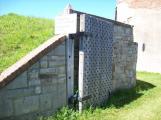27
General Brock was a simple target for any Americans soldier as he rode his horse towards the American lines. His colourful uniform and officer's insignia clearly marked him as a critical target. After Brock's death the Coloured Corps, of approximately 30 blacks along with Aboriginal soldiers, using the skirmishing technique, focused their attention on the Americans. Their efforts could have drawn the Americans' attention away from reinforcements approaching from the rear, behind the earthen fortification at the top of the escarpment.28
Coloured Corps Honour Guard escorted General Isaac Brock's remains to rest under monument site20 July 2009
Queenston Heights Park, Ontario, Canada
 Credits:
Credits:James Black
29
What happened to Prisoners during the conflicts between the United States and Upper Canada?There is clearly a distinction between the treatment of the Black soldiers and the soldiers of upper class society. Jack William's, biographer of William Hamilton Merritt, tells about the treatment of this captured white officer. Merritt was placed on a kind of prisoner of war 'parole' in Greenbush, Massachusetts. Merritt was allowed to take lengthy rides in the country, play billiards, participate in special dinners and even attend church with attractive young ladies. Not surprisingly, Merritt married an American woman within days of his release at the close of the war. Merritt's only complaint was boredom!
In stark contrast, according to the book "Broken Shackles," also by Meyler and Meyler, a Black soldier who was captured after a battle near Canard River, close to Amherstburg in Upper Canada, was sold into slavery during the War of 1812. This apparently was common practice with captured Black soldiers. In the case of the Canard River prisoner of war the Americans even rounded up his family and sold all of them as slaves. Black soldiers and their wives and children were never heard from again.
30
Typical Cotton Plantation Field in South Carolina11 November 2008
South Carolina, United States
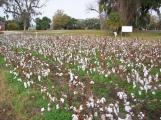 Credits:
Credits:James Black
31
The Merritt Monument offers no recognition of the Coloured Corps20 July 2009
St Catharines, Ontario, Canada
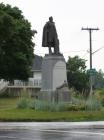 Credits:
Credits:James Black
32
Fort MississaugaThe original Fort George was destroyed during the War of 1812. After some assessment by officers of the day, a new site was selected and a secure smaller fortification was ordered constructed with a dry ditch in a unique star-shaped earthen works. The Coloured Corps, during war conditions, built this much smaller but more defendable fort. Much of the original work of 1813-14 stands to this very day as Fort Mississauga in Niagara-on-the-Lake. The Coloured Corps' contribution and loyalty was rewarded in 1824 when Brock's body was moved to the present monument in Queenston, Ontario, with an accompanying honour guard of 6 members of the Coloured Corps walking their horses beside the carriage that carried Brock's remains. (Meyler)
33
Fort Mississauga National Park22 July 2009
Niagara-on-the-Lake, Ontario, Canada
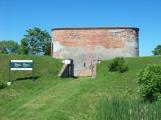 Credits:
Credits:James Black
35
Living HistoryWhile doing some research into the origins of Old Fort Henry in Kingston Ontario, during the summer of 1974, the author of this storyline came across a unique reference to Fort Mississauga in a report written by the highly respected historian, Ronald Way. Way's imagination made it possible for places like Old Fort Henry, Upper Canada Village, and even Louisbourg in Nova Scotia, to come alive as 'living museums' with summer students re-enacting the roles of historical characters. Way's report was an assessment of Canada's early historic sites and listed different potential sites to be rebuilt as museums. Fort Mississauga was at the top of the list to be rebuilt! Why? Way's logic seems very plausible even now - Fort Mississauga was in far better physical condition then any other historical site in Ontario. Old Fort Henry was never completed even when it was originally built. Fort Mississauga, on the other hand, was built during war and stands even to this day as an example of the workmanship of Canada's Coloured Corps and their contributions.
36
Fort Mississauga, standing since 181322 July 2009
Niagara-on-the-Lake, Ontario, Canada
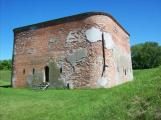 Credits:
Credits:James Black
37
Underground storage, part of star-shaped earthen works20 July 2009
Niagara-on-the-Lake, Ontario, Canada
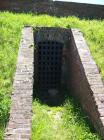 Credits:
Credits:James Black
38
Many of the Forts and historic sites Ronald Way made into living museums are a tribute to the average citizen who fought battles, lived under terrible conditions and who, by their sheer survival, are a tribute to being Canadian. Today, Fort Mississauga, in spite of being almost 200 years old, still stands and is ready to become a living museum celebrating almost 300 hundred years of struggle in the fight against slavery and lingering discrimination in Canada and the United States.39
University Student as Historic Pioneer Corps through 'Living History' at Old Fort Henry, Kingston9 July 1974
Old Fort Henry, Kingston, Ontario, Canada
 Credits:
Credits:Courtesy: Betty Black
40
Artist depiction of Black Soldier Pioneer Field Engineer - no 'Living History' at Fort Mississauga20th Century
Unknown
 Credits:
Credits:Norval Johnson Heritage Centre
